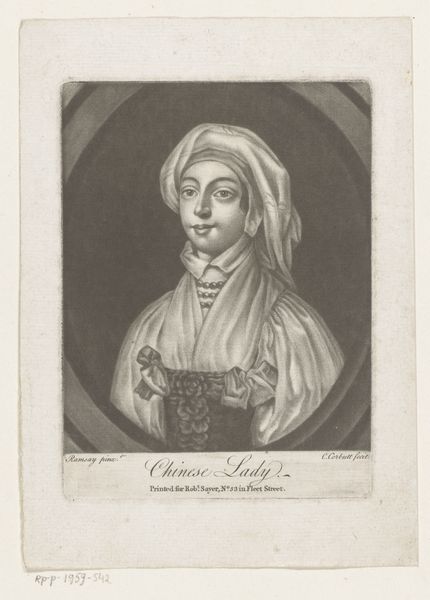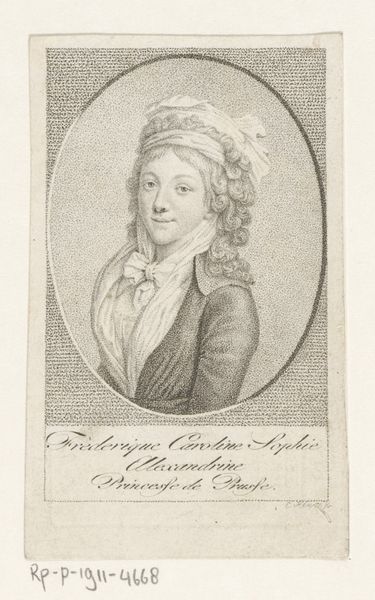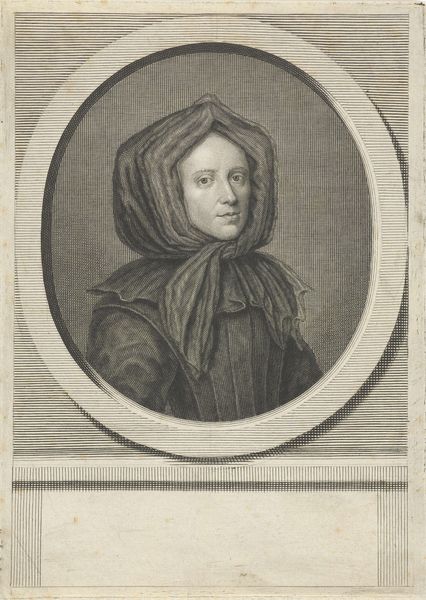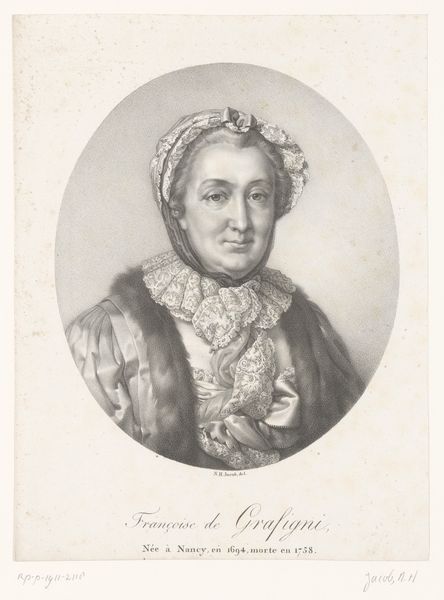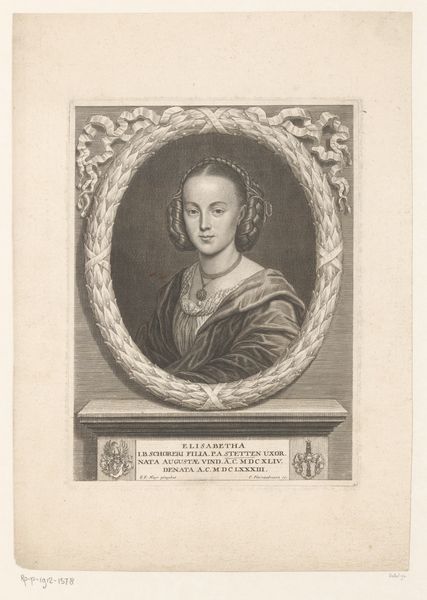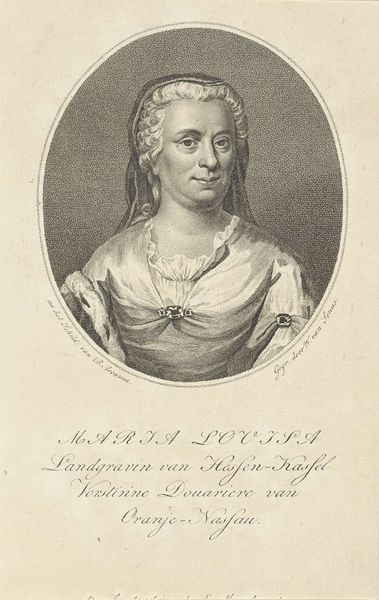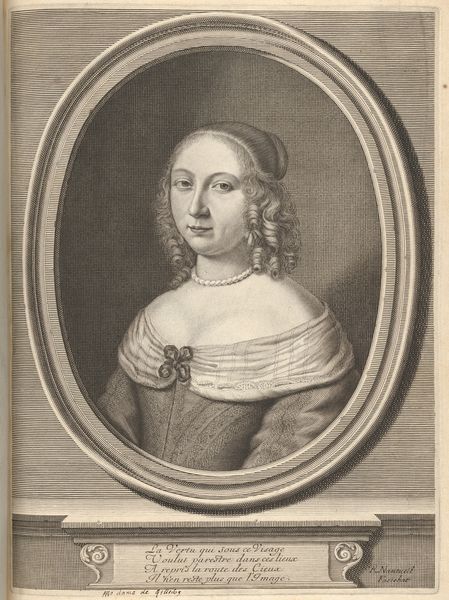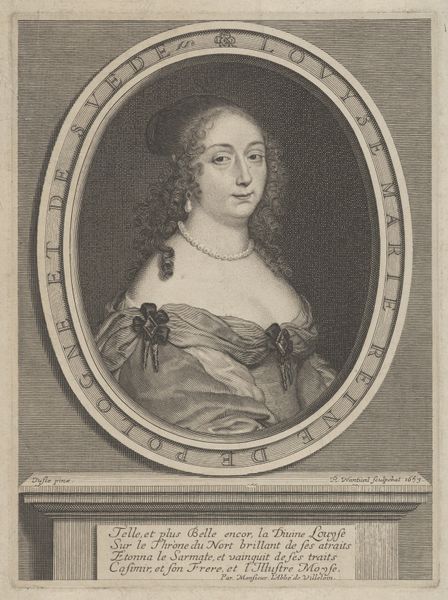
print, engraving
#
portrait
#
neoclacissism
# print
#
old engraving style
#
history-painting
#
engraving
Dimensions: height 103 mm, width 70 mm
Copyright: Rijks Museum: Open Domain
Editor: This is "Portret van Elisabeth Christina" by Meno Haas, made sometime between 1786 and 1833. It's an engraving, so a print, and it feels very formal, very neoclassical. The oval shape framing her portrait is so clean. What do you see when you look at this piece? Curator: I am immediately drawn to the technical skill demonstrated in the engraving. The artist's manipulation of line to create subtle gradations of tone and texture is quite sophisticated. Consider how the varying densities of lines articulate the fall of light across Elisabeth Christina's face and gown. Notice the textures, achieved purely through variations in line weight and spacing. Editor: I see what you mean. The way the lines curve to define her cheekbones is pretty masterful. Curator: Precisely. It's also worthwhile considering the oval format. Its smooth, contained form serves to further isolate the figure, enhancing the viewer’s focus on the sitter's likeness. Consider the strategic placement of light and shadow to build the internal composition; what impression do you get from these deliberate visual decisions? Editor: It definitely gives her a sense of importance, maybe even a little bit of distance. Like she’s meant to be admired but not necessarily approached. Curator: An astute observation. The neoclassical style, with its emphasis on order and clarity, complements this effect perfectly. There's a coolness, a lack of sentimentality, even. It prompts consideration of the artist's technical capabilities. The material considerations are at the fore here; what story does the engraver want us to know of his mastery? Editor: I hadn’t thought about it that way before – focusing on the artist's technique as a message itself. This engraving feels different now. Curator: Indeed, looking through the material choices opens new readings, and brings the artist to the fore.
Comments
No comments
Be the first to comment and join the conversation on the ultimate creative platform.
